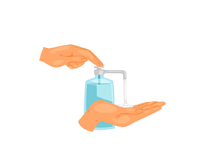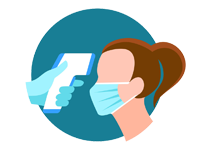Beta-Cyclodextrin
Beta-Cyclodextrin is a cyclic oligosaccharide, commonly used in the pharmaceutical industry for enhancing the solubility and bioavailability of poorly soluble drugs. It is made up of seven glucose units and has a hydrophilic outer surface and a hydrophobic central cavity. This structure allows it to encapsulate various substances, improving their stability and solubility in water. Beta-Cyclodextrin is frequently used in drug formulations, particularly for oral and topical administration, and plays a key role in drug delivery systems.
Uses of Beta-Cyclodextrin
- Improves drug solubility and bioavailability
- Enhances the stability of sensitive pharmaceutical compounds
- Used in controlled drug delivery systems
- Increases the dissolution rate of poorly soluble drugs
- Utilized in cosmetics and food industries for stabilization purposes
How Beta-Cyclodextrin Works
Beta-Cyclodextrin works by forming inclusion complexes with hydrophobic drug molecules, encapsulating them within its central cavity. This process helps improve the solubility and stability of the drug, making it easier for the body to absorb and utilize the active ingredients.
Benefits of Beta-Cyclodextrin
- Enhances the solubility and bioavailability of poorly soluble drugs
- Improves the stability of sensitive drugs and compounds
- Reduces side effects by controlling the release of drugs
- Used in a variety of pharmaceutical, cosmetic, and food applications
- Promotes efficient drug delivery, especially for oral formulations
How to Take Beta-Cyclodextrin
Beta-Cyclodextrin is typically used as part of a drug formulation in oral tablets, capsules, or topical preparations. The dosage and administration depend on the specific medication it is combined with. It is essential to follow the instructions provided by your healthcare provider or pharmacist regarding its use in different applications.
Types of Dosage Available
- Beta-Cyclodextrin in solid forms (e.g., tablets, capsules)
- Beta-Cyclodextrin in liquid formulations for intravenous or topical use
- Beta-Cyclodextrin as part of drug delivery systems for controlled release
Side Effects of Beta-Cyclodextrin
Common side effects:
- Gastrointestinal discomfort (e.g., bloating, gas)
- Allergic reactions (rare)
- Skin irritation (in case of topical applications)
Serious side effects (rare):
- Severe allergic reactions (rash, swelling, difficulty breathing)
- Gastrointestinal distress in sensitive individuals
Safety Advice
- Consult your healthcare provider before using Beta-Cyclodextrin if you have any known allergies
- Use under the supervision of a doctor in case of underlying health conditions
- Avoid excessive consumption in non-pharmaceutical applications
- Follow prescribed dosages for pharmaceutical products containing Beta-Cyclodextrin
Frequently Asked Questions (FAQs)
Q: What is Beta-Cyclodextrin used for?
A: Beta-Cyclodextrin is used in drug formulations to improve the solubility and bioavailability of poorly soluble drugs. It is also used for controlled drug delivery and in cosmetics and food products.
Q: Is Beta-Cyclodextrin safe?
A: Yes, Beta-Cyclodextrin is generally considered safe when used as directed in pharmaceutical and cosmetic products. However, it can cause mild gastrointestinal discomfort in some individuals.
Q: How does Beta-Cyclodextrin improve drug delivery?
A: Beta-Cyclodextrin encapsulates hydrophobic drug molecules, enhancing their solubility and stability, which improves their absorption and effectiveness in the body.
Q: Can I use Beta-Cyclodextrin on my skin?
A: Beta-Cyclodextrin is often used in topical formulations, but it should be used according to product instructions. In rare cases, it may cause skin irritation.
Q: Can Beta-Cyclodextrin be used with other medications?
A: It is commonly used in combination with other medications, particularly for improving solubility and bioavailability. Always consult your healthcare provider or pharmacist for advice on potential drug interactions.
Download India's most affordable pharmacy app
- Compare with medicine prices
- Save upto 90% on your medicine bills

Temperature Controlled storage and delivery

Regular Sanitization

Disinfected Packaging










 Added!
Added!